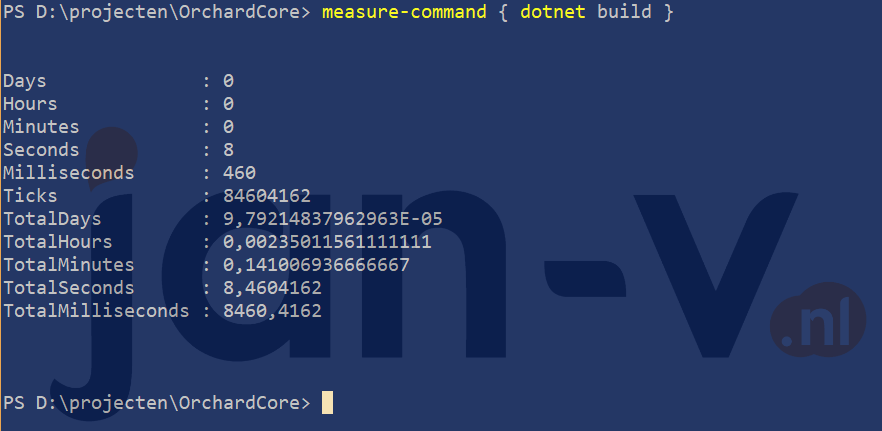My new desktop build
I’ve been using my current desktop for almost 8 years now and it’s still running quite fine! In order to support 3 monitors, including at least one 4K, the graphics card did get an update to a GTX 950 a while back. But other than that it’s still exactly the same and quite performant.
Development is snappy enough, browsing still superb and doing some light modifications in Lightroom or Photoshop is doable.
So, why do I want to upgrade? Well, I want to focus a bit more on semi-pro photography. While it is quite doable to import and modify photo’s on the current system, it’s too slow if you need to do this often.
Being a proper nerd I have read almost every news article, announcement and review of all of the hardware which was released or will be released in the near future. All in order to make the ‘best’ build I can afford.
From the information I had gathered, the ‘smart’ choice for a processor appears to be AMD. Those processors are rather cheap, have got quite a bit of threads and a decent clock speed. The main problem with them is�they aren’t Intel. You can call me stupid, but I still prefer to have an Intel processor in my system.
Doing stuff in Lightroom and Photoshop requires a high (single core) clock speed. The Intel processors range as high as 5GHz, which is amazing in my mind. However, for development purposes, having multiple cores/threads is also rather useful.
When taking a look at the latest generation of Intel’s processors, this will automatically point me to the Intel i9 9900K. A rather expensive processor (at the moment), but it has all the features I want for now. A clock speed of 5GHz (Turbo or overclocked) and with the hyperthreading feature enabled it will have 16 threads to use.
While reading up on the i9 9900k processor, I had read they can become quite warm. Stock coolers aren’t something I’d advice anyone and water-cooling seemed appropriate for this system. The all-in-one systems are also rather affordable nowadays, so I felt the need to buy one of these systems. One advantage of having an AIO cooler, they hardly make any sound!
Storage is rather cheap, so going full-SSD is recommended for both development and photography. In my current workflow I don’t need more as 1TB of storage space.
The current NVME drives aren’t -that- expensive anymore, which pointed me to a nice 500GB NVME drive and a 500GB SATA SSD drive. I like having 2 drives (or more) separate drives. Installing 1 1TB drive might give me more of a performance boost, but also more ‘risk’ in loosing everything when it crashes. Now I only loose half of my files (yeah, I do create backups and yes, I know this isn’t very sane reasoning)
Graphics aren’t very important to me. My only demand is the graphics card has to be able to support at least 3 4K monitors (preferably Cinema 4K) at 60Hz in Windows. Having support for higher resolutions and more monitors is nice, but not necessary at the moment.
A motherboard is just one of those pieces of hardware I don’t care about much. Having the availability for multiple NVME drives and overclocking features are nice-to-haves.
Memory still is rather expensive, especially if you want those packs which have the potential to overclock a bit. Because my funding is limited, I went for a 16GB pack which should be able to run at 4266MHz. Having 32GB available would only be useful for large Photoshop edits, but for now I hope 16GB will be enough. For development purposes 16GB will certainly be enough (for me) as I’m not creating virtual machines anymore. If I do, I just spin them up in Azure or use Docker containers locally.
Putting it all together, this is what I came up with in the end.
- CPU: Intel i9 9900K
- CPU Cooler: NZXT Kraken X62
- Motherboard: Asus ROG STRIX Z390-E GAMING
- Graphics card: GeForce� GTX 1060 G1 Gaming 6G
- PSU: BitFenix Formula Gold 550W
- Hard drives: SSD 970 EVO NVMe M.2 500GB & Samsung 860 EVO 500GB
- Case: Antec P110 Luce
- Memory: G.Skill F4-4266C19D-16GTZSW
After having assembled the system the first thing I noticed how quiet it is! It doesn’t make any sound. This also has a downside, because now I hear my NAS all the time which is standing like 4 meters away from me.
As mentioned, the memory should be able to run at 4266MHz with the XMP profile loaded. So far I haven’t been able run the system stable at this speed. In order to get this working I might have to start tweaking the voltages a bit, but I haven’t tried this yet.
For now I want this system to run stable for some time and once it has proven itself, I might start tweaking the settings a bit more.
So, how does it perform you wonder?
Well, let’s run the real-world performance test I read at Scott Hanselman’s post some time ago.
The Orchard Core build takes about 8,4 seconds to complete. Keep in mind, all of the NuGet packages are already downloaded.

From what I’ve read in the comment section of Scott’s post, this might get a bit better when I start tweaking and overclocking the system a bit more. But, for development & photo editing purposes this is fast enough for now.
I don’t really have performance tests for my Lightroom & Photoshop work, but after having imported and edited a couple of photos I can say the performance gain is real! I never have to wait anymore, so doing all of this photo editing work is finally fun again.
All in all, quite a happy camper! Let’s see how long this system will be able to keep up with all of the my work.
